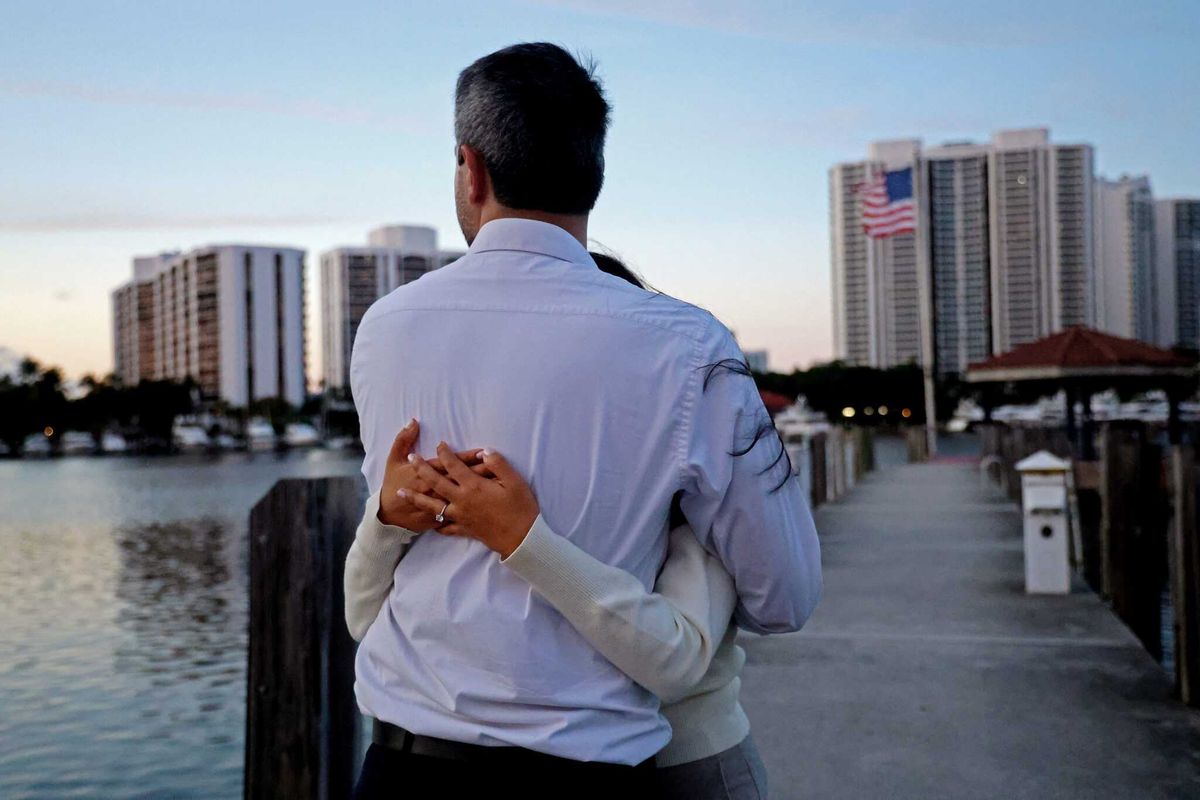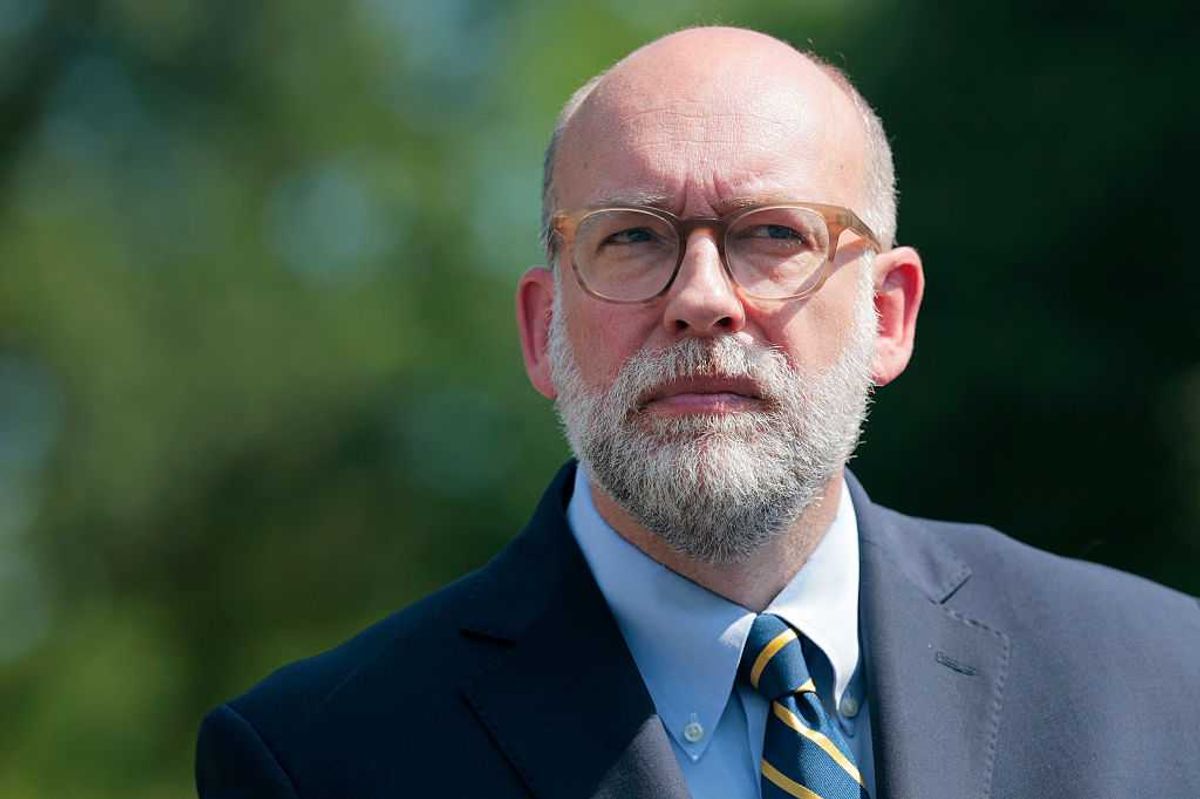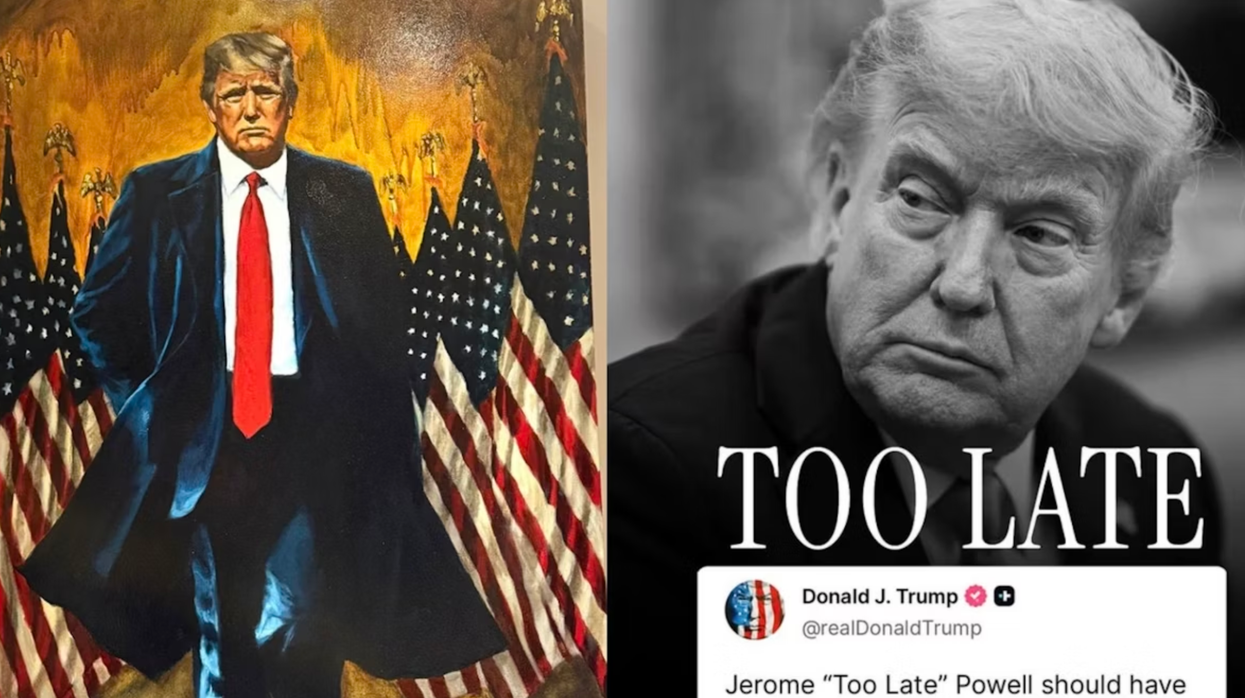Site Navigation
Search
Latest Stories
Start your day right!
Get latest updates and insights delivered to your inbox.
Top Stories
Latest news
Read More
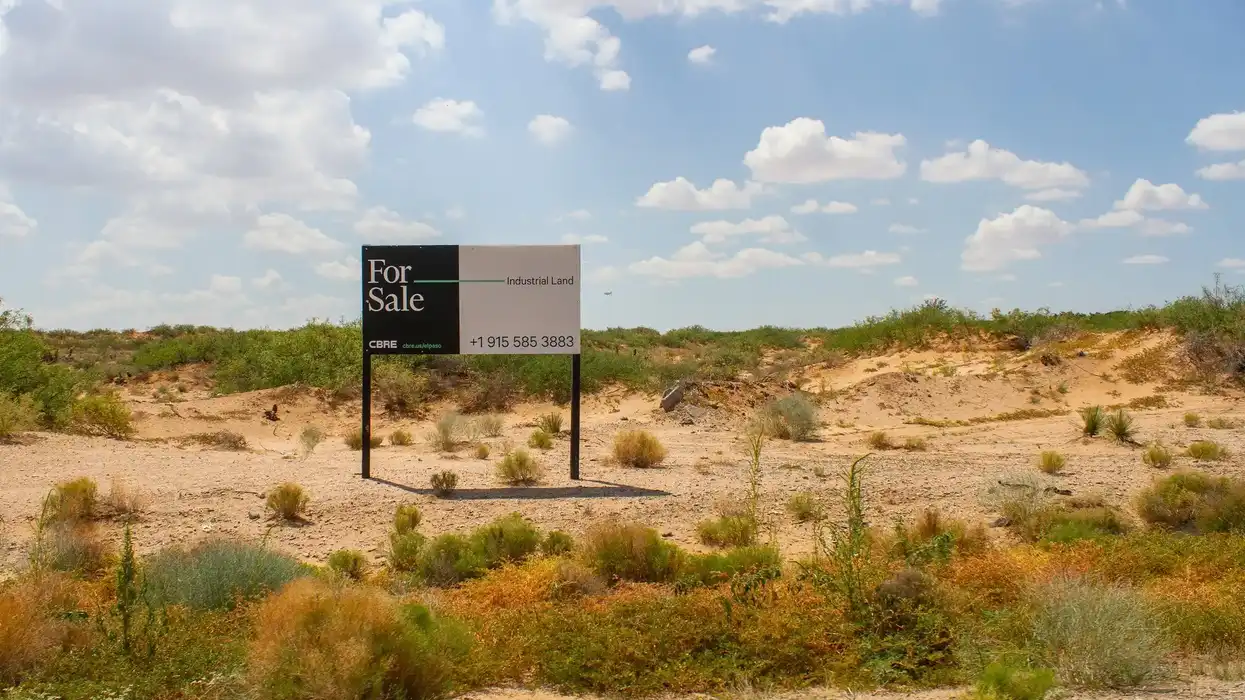
A "for sale" sign in the area where the Austin, Texas-based group BorderPlex plans to build a $165 billion data center in Santa Teresa, New Mexico.
Photo by Alberto Silva Fernandez/Puente News Collaborative & High Country News
The Desert's Thirsty New Neighbor
Oct 30, 2025
Sunland Park, New Mexico, is not a notably online community. Retirees have settled in mobile homes around the small border town, just over the state line from El Paso. Some don’t own computers — they make their way to the air-conditioned public library when they need to look something up.
Soon, though, the local economy could center around the internet: County officials have approved up to $165 billion in industrial revenue bonds to help developers build a sprawling data center campus just down the road.
“Project Jupiter” is the latest in a tidal wave of data center projects popping up across the country. Once built, the giant buildings full of computer hardware work 24/7 to power artificial intelligence and web searches for tech companies. Developers BorderPlex Digital Assets and STACK Infrastructure have been the public faces of Project Jupiter — but last week, after local officials voted to support the effort, tech giants OpenAI, Oracle, and SoftBank revealed that they’ll be the clients for the campus. In a press release, they announced that the project is part of their Stargate initiative, which includes plans to invest $500 billion in new AI infrastructure in the next few years.
The agreement approved by Doña Ana County commissioners on September 19 will allow developers to avoid paying property taxes on Project Jupiter for 30 years. In exchange, the companies are pledging $360 million in payments to the county over that period — plus more than $50 million for local infrastructure improvements. They say they’ll hire 2,500 people to build the campus, starting later this year, and then 750 for permanent roles, all prioritizing locals.
That’s a big deal for Doña Ana County. Here, where the Rio Grande peels away from the Mexican border, a quarter of the population lives below the poverty line. Sunland Park’s most prominent business is a racetrack and casino complex that looks out on a long string of strip malls leading into the desert below Mount Cristo Rey. To the west, the small town of Santa Teresa — the proposed home for Project Jupiter — has worked for decades to court development around its port of entry to rural Chihuahua.
But in a few short weeks, the deal has generated intense controversy. Like the residents of dozens of other U.S. communities facing the arrival of a data center, many in Doña Ana County are wary. A large data center could use millions of gallons of drinking water a day to keep its equipment cool, and the industry already accounts for more than 4% of total U.S. electricity consumption in a given year.
Project Jupiter’s developers have promised to build their own microgrid and said they’ll use a small fraction of that water, but residents are urging caution.
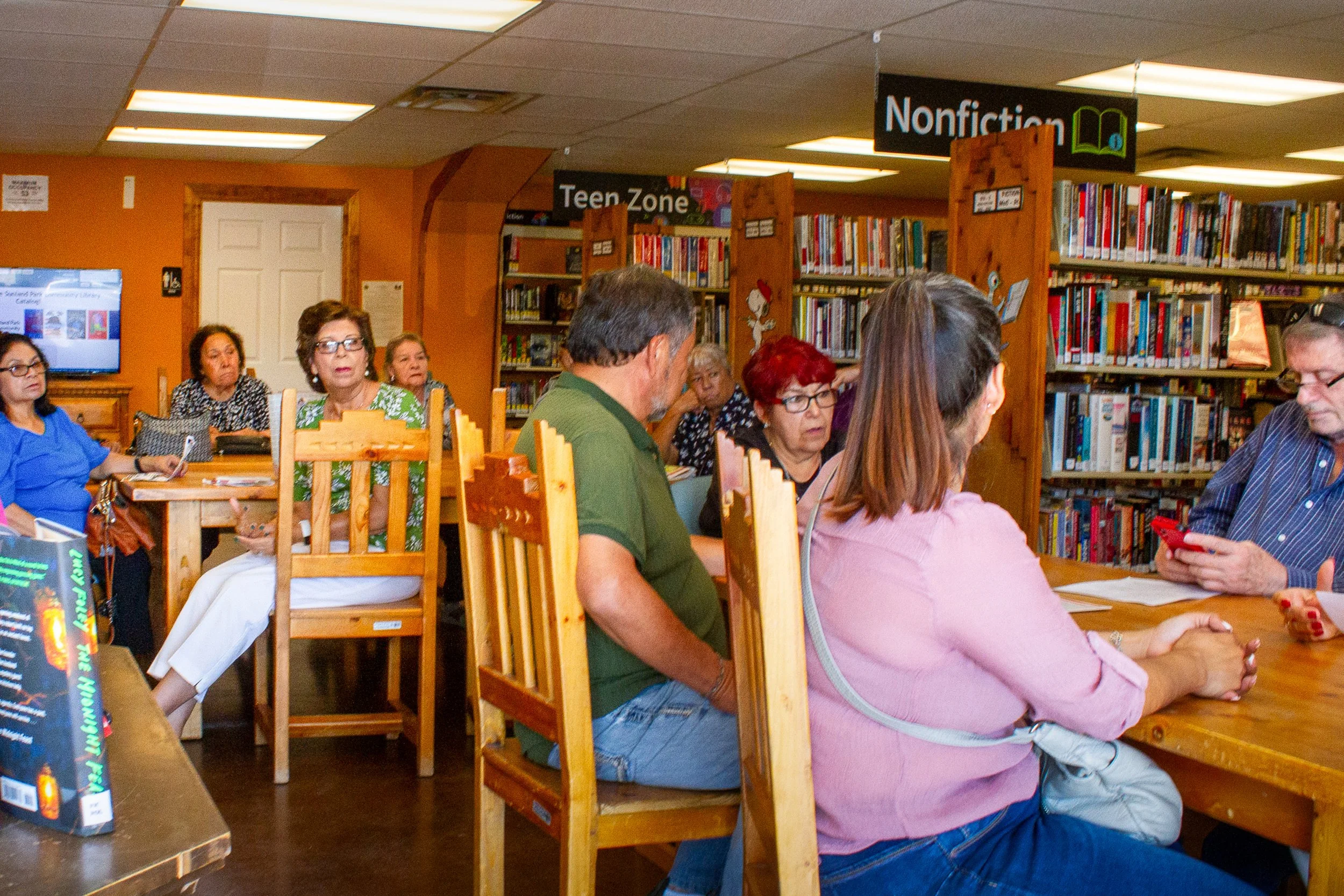
Residents of Sunland Park, New Mexico, gathered in August at the local library to discuss the effects that a proposed $165 billion data center might have on their community. Photo by Alberto Silva Fernandez/Puente News Collaborative & High Country News
In late August, about 15 people from Sunland Park and organizers from the nonprofit Empowerment Congress of Doña Ana County met at the library to discuss the proposal. “I don’t understand much of the technology,” said attendee Alma Márquez, in Spanish. “But we have a lot of basic needs here in Sunland Park.”
The city started as a group of colonias — unplanned settlements that emerged along the border in the 1980s and ’90s when developers sold off plots for low prices, often without ensuring that residents would have basic services. Decades later, people here and in Santa Teresa are still struggling to access clean water.
“This thing that’s coming consumes a lot of power, a lot of water,” Márquez said. “What’s going to happen with us, with that water we need (to be) clean?” Looking around the room, she asked, “And why here?”
Santa Teresa has long harbored dreams of becoming a hub for cross-border industry. BorderPlex Digital says its location on the edge of two states and two countries makes it a particularly attractive place to invest. “We firmly believe that the next wave of frontier tech belongs on the American frontier,” the company’s CEO said in a press release.
But the county’s colonia residents aren’t convinced. Even as their leaders give developers the green light, they’re joining a growing number of communities around the country that see data centers as a threat, not a boon.
The proposed site for Project Jupiter is a flat stretch of scrub along the highway just north of the port of entry. Its closest neighbors include a set of industrial parks built to complement the maquiladoras across the border, and a new solar plant where thousands of panels point skyward.
As data centers proliferate, many are landing in rural or exurban areas like this, where open space abounds. And local leaders are often eager to welcome them. When Gov. Michelle Luján Grisham first announced a partnership with BorderPlex Digital in February, she called it an opportunity to “position New Mexico as a leader in digital infrastructure.” In the same press release, Davin López, president of the Mesilla Valley Economic Development Alliance, wrote that Project Jupiter is “precisely the type of development we’ve been working to attract — one that leverages innovation to strengthen our position as a key player in global trade.”
In the earliest phases of the AI boom, such developments were often quietly approved, with limited public input or outcry. But that’s changing. Data Center Watch, an industry research firm, has counted $64 billion of data center projects that have been delayed or paused in just two years amid local opposition.
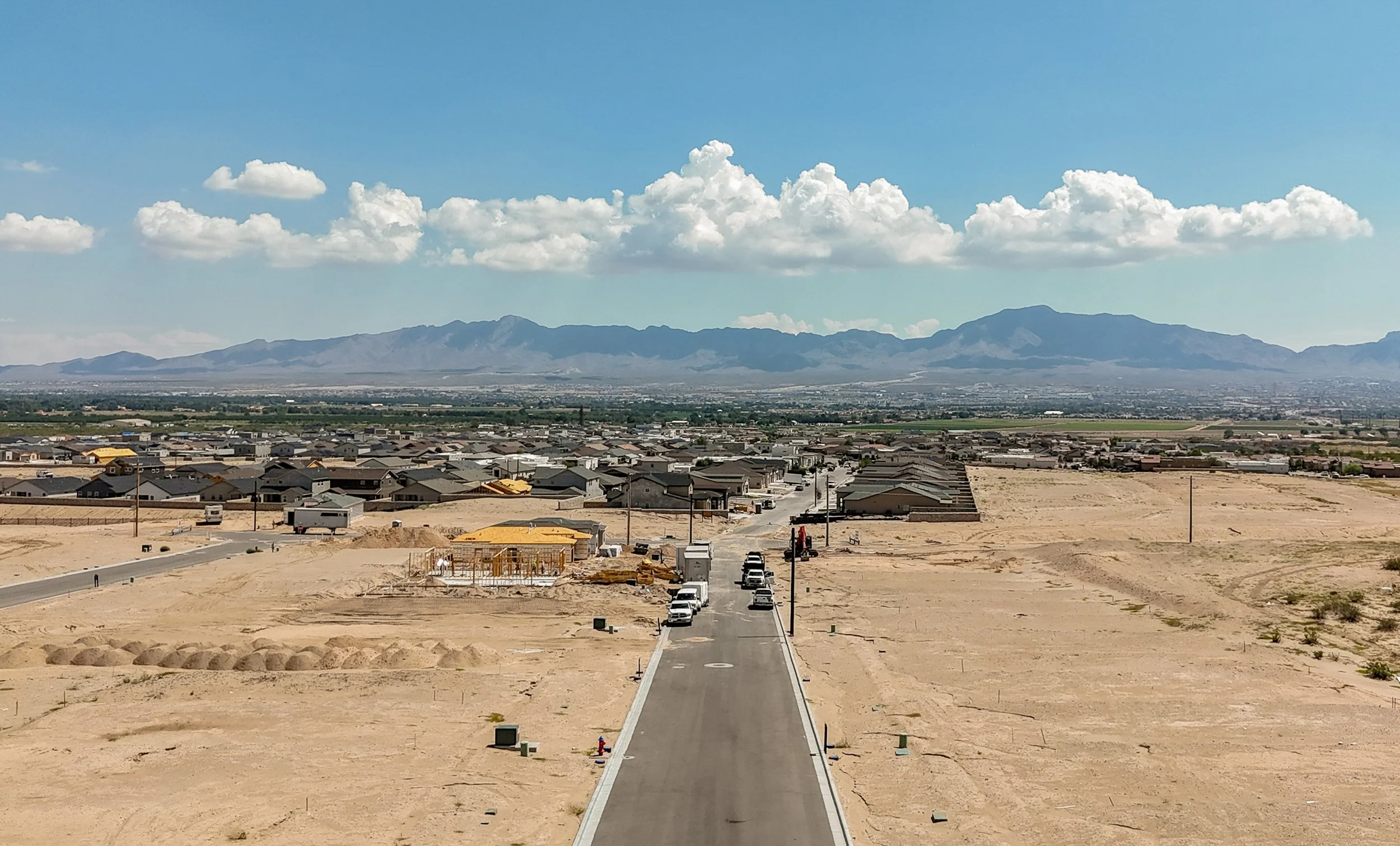
Construction near a housing development in Santa Teresa, New Mexico, not far from the proposed site for “Project Jupiter.” Photo by Alberto Silva Fernandez/Puente News Collaborative & High Country News
Protests started in Virginia, currently the data center capital of the world. But as the industry moves west, it’s facing increasing backlash in states from Texas to Oregon to California. In Cascade Locks, Oregon, voters recalled two local officials for supporting a $100 million data center. In Mesa, Arizona, the city government just passed new regulations restricting data center construction. The California legislature is currently considering multiple bills focused on data center energy use.
As the research group Data Center Watch notes, opposition cuts across party lines, with frustrated neighbors criticizing everything from tax breaks and rising utility costs to noise pollution and decreasing property values. In the arid Borderlands, water use tops the list of concerns. This summer, when Amazon attempted to quietly push through a massive data center near Tucson, hundreds of people showed up to city council meetings, bearing pamphlets that said, “Protect our water future.”
In Doña Ana County, the opposition has been led by colonia residents focused on an already too-dry present. In early 2024, after residents reported slimy water coming from their taps, a state investigation found dozens of violations by the Camino Real Regional Utility Authority (CRRUA) — including evidence that the utility had been bypassing arsenic treatment for over a year, selling contaminated water to more than 19,000 customers. The county has since announced plans to end its relationship with CRRUA, and the state has sued the utility over a decade of mismanagement. But residents cite continued issues with their water: yellow discoloration, sediment in the stream, and taps that barely drip despite escalating bills.
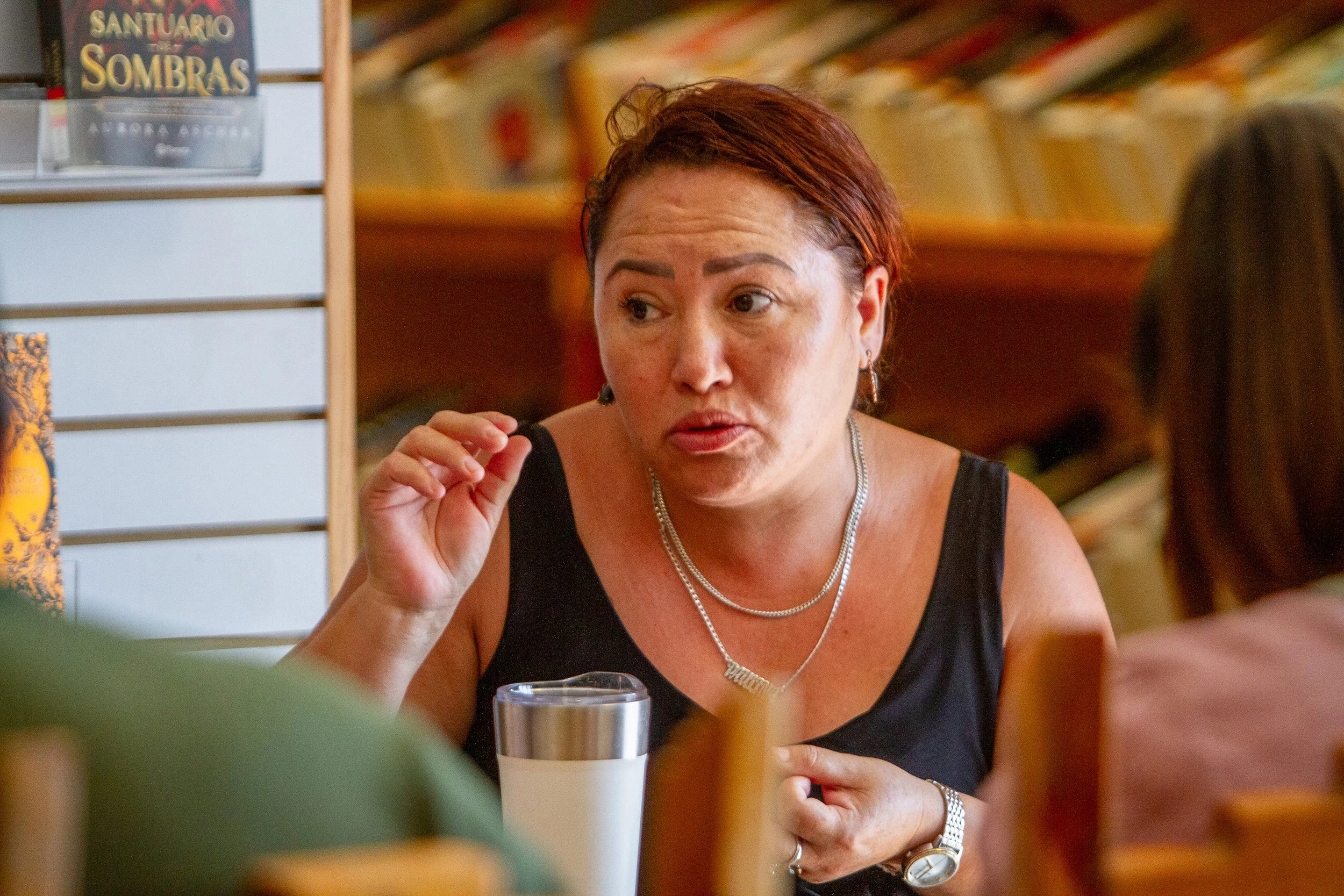
Paulina Reyna speaks at a gathering of Doña Ana County residents in Sunland Park. Photo by Alberto Silva Fernandez/Puente News Collaborative & High Country News
At the library in Sunland Park, Joe Anthony Martínez, 76, pointed to scars on his neck, where a surgeon removed skin cancer that he believes was caused by the water. Unwilling to trust the tap, he and his wife have spent years paying for filtered water. Now, as the county and city work towards establishing a new utility system, they worry that even if the water improves, it will go to the data center.
“We don’t want any of that,” Martínez said in Spanish. “What we want is quality water.”
As concerns about data centers’ resource use gain traction, the industry is working quickly to demonstrate its environmental consciousness. BorderPlex Digital says Project Jupiter will minimize water use by employing a cooling system that recycles water, rather than the more traditional system that evaporates it. A company spokesperson said in an email that their partner firm, STACK, currently operates data centers in Oregon using the same technology.
“The closed-loop cooling system requires only a one-time fill-up and will therefore limit ongoing water use to domestic needs of employees (similar to an office building with 750 employees),” he wrote.
According to documents detailing the agreement between developers and the county, “ongoing operations” for the campus will rely on treated drinking water provided by the county and CRRUA, the utility that county officials plan to replace.
In a public meeting, developers said that the initial fill would require about 10 million gallons of water, and that the system would use 7.2 million gallons annually. Daily water use for the campus will average around 20,000 gallons a day, capped at 60,000.
Daisy Maldonado, director of the civic engagement group Empowerment Congress, remains skeptical. “I want scientific reports about how a closed-loop system works and what is the level of water evaporation and recharge needed every year,” she said. “I don't want a PowerPoint presentation that just says, ‘Don’t worry, we’re not going to use that much water.’ And I think the community deserves to know.”

Empowerment Congress director Daisy Maldonado says she is concerned that the massive infrastructure complex will cause more issues with the local water supply. Photo by Alberto Silva Fernandez/Puente News Collaborative & High Country News
While the state of New Mexico announced the BorderPlex Digital partnership in February, many in Doña Ana County didn’t learn about Project Jupiter until details of the plan were unveiled in late August, just weeks before commissioners planned a final vote on the bond proposal.
At a county meeting on August 26, commissioners tried to assuage residents’ concerns. “One of the things that we insist on as part of this discussion is that … this data center is not going to have a negative impact on the water situation down in Santa Teresa and in Sunland Park,” County Commissioner Shannon Reynolds said, according to El Paso Matters. “If it does, then I promise you, we will be on top of it.”
Over the following weeks, however, local tensions around the project rose. Early last month, Reynolds posted on Facebook the names of dozens of people who submitted public comments in opposition to the project.
In a press release, the New Mexico Environmental Law Center called the post “An act of intimidation intended to deter participation and silence community members exercising their right to participate in public and government processes.” Reynolds did not respond to a request for comment, but said on Facebook that he was naming the residents to thank them publicly.
Leading up to the scheduled vote, developers launched a website outlining their pitch and hosted a series of community meetings around the county. Dozens of people showed up to ask questions — and as the public hearing neared, residents on both sides of the issue pushed for more time to get answers. On September 16, the city of Sunland Park joined calls to delay the vote, saying its leaders hadn’t had a chance to fully assess the proposal.
But developers reportedly said postponing the decision would mean losing the development altogether. On September 19, after hours of heated debate in public comment and multiple requests from one commissioner to delay, county commissioners went ahead with the vote, approving the bond proposal 4-1.
To Daisy Maldonado, the decision wasn’t a surprise — but it did feel like a betrayal. She said she had hoped the county would ask more questions about the kinds of development it seeks. Driving down McNutt Road, the main thoroughfare through Sunland Park, she pointed out more than a dozen cannabis dispensaries. A total of 43 have filled vacant storefronts and warehouses in the city since New Mexico legalized the drug in 2021, catering to customers from across the state line.
“You know how many grocery stores are in the city of Sunland Park, in Santa Teresa?” she asked. “It might be one. For a community of almost 20,000 people.”
She sighed.
“So how is New Mexico taking care of its residents? They’re failing the people in Sunland Park, in Santa Teresa, because all they can see is the dollar signs.”
The Desert's Thirsty New Neighbor was first published by palabra and republished with permission.
Annie Rosenthal is the Virginia Spencer Davis fellow at High Country News, where she covers migration, rural communities, and life in the borderlands.
Kate Schimel is the news and investigations editor at High Country News. She lives in Bozeman, Montana. @kateschimel
Keep ReadingShow less
Recommended

As America faces division and unrest, this reflection asks whether we can bridge our political extremes before the cauldron of conflict boils over.
Getty Images, Yuliia Pavaliuk
Demons, Saints, Shutdowns: Halloween’s Reflection of a Nation on Edge
Oct 29, 2025
Double, double toil and trouble;
Fire, burn; and cauldron, bubble.
- Shakespeare
Macbeth’s witches could not have brewed up anything more poisonous than the current political and social climate. No “eye of newt” or “wool of bat” can compete with the venom surging through our country right now as we deal with a government shutdown and dissension between political parties, as well as civil unrest.
In hospital emergency rooms, the staff recognizes a phenomenon called the “Triple Witching Hour.” Three components create this witching hour: the holiday itself, Halloween falling on a weekend, and a full moon.
Halloween will soon be here, and this year it does fall on a weekend night, a Friday. However, the moon will not reach fullness until November 5th, so emergency rooms are safe on that count. Yet, just as a hospital must gear up to handle the madness of a “triple witching hour,” so must we to handle our current and future political climate.
A year from the upcoming “Beaver Moon,” as the November full moon is called, on Nov. 4, 2026, we will be holding mid-term elections. Already, the political machine is turning, and we are beginning to choose and support candidates.
Can we find true “representatives” who will really act as our representatives, and work for their constituents, not simply tow their party lines?
Few of us would have predicted when making, or already breaking, our New Year’s Resolutions last January 1st, what we would be dealing with now. Since January 20th’s inauguration, our country has endured an avalanche of lawsuits, mandates, pardons, tariffs, voting rights challenges, and economic uncertainty. Most did not foresee how much more divisive our politics could become, how protests would escalate, or how personal and devastating the political climate could be for so many.
Our country is on edge.
Such bitterness in this political polarization, such havoc it has racked upon our country and our citizens’ psyches. Such extremism on both sides.
Malcolm Gladwell, in his enormously successful book, The Tipping Point, documents the point at which change becomes unstoppable.
Change itself, of course, is inevitable and the very nature of life.
But destructive change is not. What we cannot let become unstoppable is the toppling of our beloved country.
Before the jack-o’-lanterns shrivel and we have polished off the rest of the Halloween candy, October 31st becomes November 1st, and Halloween turns into All Saints' Day. At the stroke of midnight, we’ll hurdle into the next month, going from demons to saints.
Such opposition is a familiar rhythm, a human one, incorporated into our customs and practices. Similar to the wild partying of Mardi Gras (Fat Tuesday) melding into the somberness of Ash Wednesday for Christians. What a difference a day makes.
And in just a few weeks, we will gather around the Thanksgiving table with family and friends. Or we will not, because we no longer will listen to opinions we do not champion, even if articulated by our favorite uncle, or our own child. Not even if it means severing life-long relationships because of our, or, as we claim, their, extreme political views.
Do we not agree then with our Constitution’s First Amendment, that freedom of speech, religion, press, and assembly is an inalienable right of every citizen?
Our hemisphere will very soon will be careening into winter. Cycles persist, seasons march on, holidays are celebrated, all oblivious to our views, to our great loves, to our intense hatreds. Yet our lives are lived out amidst these cycles, seasons, and holidays.
Will we defend those views we are so certain are right, no matter how extreme,or unlikely they are to ever lead to understanding? Even when they bring great heartache to us, individually, and as a nation?
Or will we recognize the duality of being human, in each of us and all of us, and put relationships we treasure and the country we love, first?
Each of us must choose.
Amy Lockard is an Iowa resident who regularly contributes to regional newspapers and periodicals. She is working on the second of a four-book fictional series based on Jane Austen’s “Pride and Prejudice."
Keep ReadingShow less
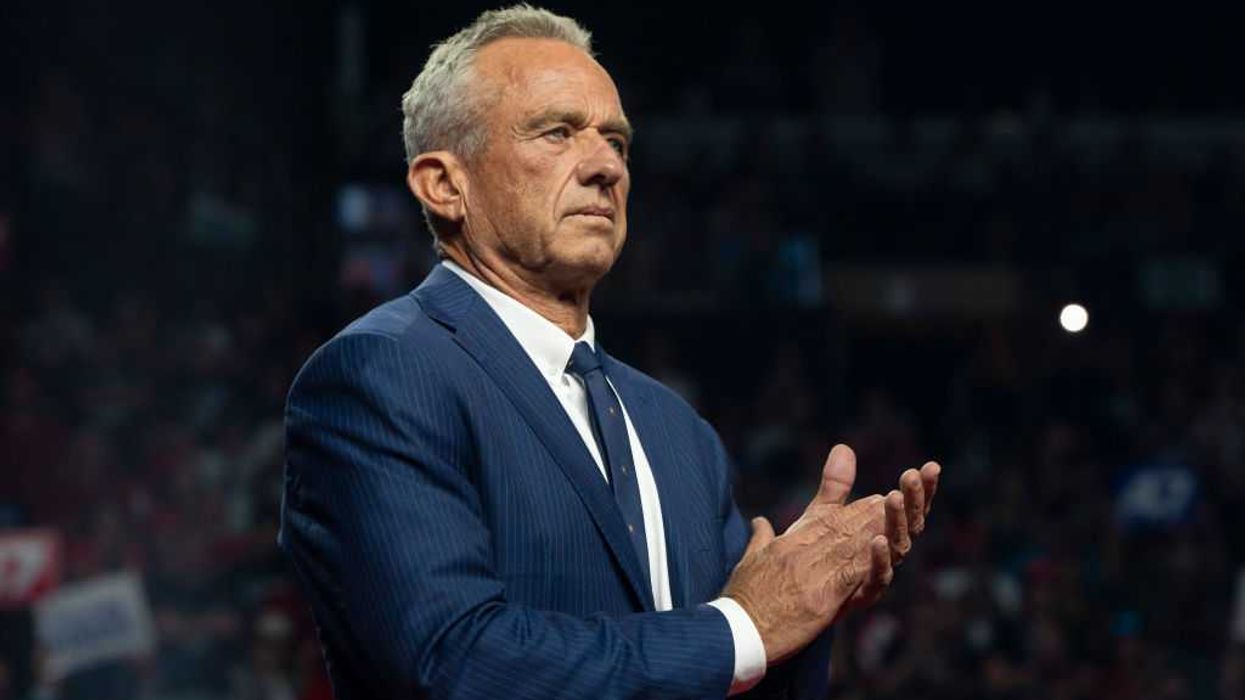
Former Republican presidential candidate Robert F. Kennedy Jr. listens during a campaign rally for Republican presidential nominee, former U.S. President Donald Trump at Desert Diamond Arena on August 23, 2024 in Glendale, Arizona.
Getty Images, Rebecca Noble
The Saturated Fat Fallacy: RFK Jr.’s Dietary Crusade Endangers Public Health
Oct 29, 2025
Robert F. Kennedy Jr.’s recent embrace of saturated fats as part of a national health strategy is consistent with much of Kennedy’s health policy, which is often short of clinical proven data and offers opinions to Americans that are potentially outright dangerous.
By promoting butter, red meat, and full-fat dairy without clear intake guidelines or scientific consensus, Kennedy is not just challenging dietary orthodoxy. He’s undermining the very institutions tasked with safeguarding public health.
Kennedy has publicly praised saturated fats, claiming they’ve been “unfairly demonized” and suggesting Americans need more of them—not less. He suggests that Americans should follow a carnivore-style diet and has hinted that new federal guidelines under his leadership will reflect this shift.
Yet he has failed to specify a safe upper limit for saturated fat intake, ignoring decades of research linking it to elevated LDL cholesterol and cardiovascular disease.
Kennedy’s statements contradict the American Heart Association's recommendation to keep saturated fat below 6% of daily calories and the U.S. Dietary Guidelines' cap of 10%.
The risks of saturated fats are clear, as illustrated in this chart:
As saturated fat intake rises from 5% to 25% of daily calories, LDL cholesterol climbs from 100 to 160 mg/dL. The risk of heart disease more than doubles.
These aren’t abstract numbers—they represent lives shortened, families disrupted, and billions in preventable healthcare costs.
Kennedy's rhetoric may appeal to populist instincts. Still, it erodes trust in science and weakens the government's constitutional duty to "promote the general welfare." Public health policy must be grounded in evidence, not ideology. When the Secretary of Health and Human Services ignores science and promotes half-baked ideas, the health of millions of Americans is put at risk.
Kennedy’s framing of saturated fat as a victim of elite misinformation weaponizes distrust at a time when civic cohesion is already fraying. Dangerous medical narratives from the top health official in the federal government cannot be ignored.
This is not the first time Kennedy has promoted unscientific, potentially dangerous health practices. Kennedy's tenure as Secretary of Health has focused on debunked claims such as vaccines being linked to autism, the unfounded linkages of acetaminophen (Tylenol) use in children and pregnant women to autism, citing unverified studies, to name a few.
Kennedy has urged Americans to "stop trusting experts" and instead "do their own research," a stance that has drawn criticism from public health leaders.
The Secretary of the U.S. Department of Health and Human Services (HHS) is the chief executive of the federal agency responsible for protecting the health of all Americans and providing essential human services. The Secretary oversees major public health institutions, including the Centers for Disease Control and Prevention (CDC), the Food and Drug Administration (FDA), the National Institutes of Health (NIH), and the Centers for Medicare & Medicaid Services (CMS). His role includes setting national health policy, managing public health emergencies, regulating food and drug safety, advancing medical research, and administering programs that serve vulnerable populations, as well as playing a critical role in shaping federal responses to issues like pandemics, opioid addiction, mental health, and health equity.
In a joint statement in early October from six former Surgeons General (including Vivek Murthy, Jerome Adams, Richard Carmona, David Satcher, Joycelyn Elders, and Antonia Novello)
“The actions of Health and Human Services Secretary Robert F. Kennedy Jr. are endangering the health of the nation. Never before have we issued a joint public warning like this.”
The person in this position must advocate policy rooted in science, not personal opinions or sentiment.
David Nevins is publisher of The Fulcrum and co-founder and board chairman of the Bridge Alliance Education Fund.
Keep ReadingShow less

apples and bananas in brown cardboard box
Photo by Maria Lin Kim on Unsplash
Who’s Hungry? When Accounting Rules Decide Who Eats
Oct 29, 2025
With the government shutdown still in place, a fight over the future of food assistance is unfolding in Washington, D.C.
As part of the One Big Beautiful Bill Act of 2025, Congress approved sweeping changes to the Supplemental Nutrition Assistance Program, or SNAP, affecting about 42 million Americans per month.
The law restricts future benefit increases, tightens work requirements, and shifts more administrative costs to states. Unless Congress gets back to work, benefits could be delayed or suspended altogether.
Beneath the partisan noise lies something quieter and more consequential: the administrative machinery that determines who receives help and who is excluded. SNAP does not operate through campaign slogans or floor speeches but through thousands of pages of eligibility rules and cost calculations.
These may appear technical, but they reveal how the modern administrative state governs through measurement as much as through lawmaking. The formulas that structure SNAP are performative. They do not simply measure poverty; they help define it.
Research back to 2003 has shown how financial models once used to price futures contracts ended up shaping the very markets they were designed to describe. Measurement, they argued, can make realities rather than merely observe them.
As a professor of accountancy and business history, I study how systems built to measure profit and efficiency have seeped into the public realm, quietly shaping how need and entitlement are defined.
The same principle applies to social policy. The tables, thresholds, and quality-control ratios used by SNAP do not just record economic life; they construct it by determining who counts as “in need.”
The latest revisions make this visible. The bill passed in July limits how the Thrifty Food Plan, the benchmark used to set benefit levels, can be adjusted for inflation. It prohibits future revaluations that would raise costs, ensuring that benefits will not keep pace with real food prices.
At the same time, the law changes the treatment of household utilities and internet costs and reduces federal reimbursement for state administrative expenses. Each of these adjustments may seem minor, but together they alter the eligibility boundaries.
Even the program’s internal accounting incentives matter. States are evaluated on payment error rates, the share of benefits deemed incorrectly issued. High error rates can trigger financial penalties.
The very way those rates are measured varies. What counts as an error, how samples are drawn, and how responsibility is assigned, encourage states to err on the side of exclusion. When in doubt, it is safer to deny than to approve. The result is a bureaucracy that prizes precision over access.
This is not new.
Since the New Deal of the 1930s, every major federal social program has relied on measurement systems to translate public commitments into administrable form. Eligibility tables and benefit formulas have always served as the invisible infrastructure of American governance.
Yet when those formulas change, the effects are anything but invisible. They determine which households keep food on the table and which do not.
That is why debates over SNAP’s size or cost often miss the deeper issue. Sen. Mike Lee (R-UT), for example, has argued that “SNAP was designed to provide temporary relief to vulnerable people facing difficult times, not a permanent subsidy for able-bodied adults,” emphasizing cost and dependency.
What is absent from such debates is any scrutiny of how the program itself defines vulnerability or measures need. Lawmakers argue over how much to spend, but rarely ask how the underlying measurements shape the answer.
If the formulas that define need and benefit levels are adjusted, the fiscal picture shifts with them. What looks like restraint through one metric can become austerity through another.
To be clear, none of this implies that SNAP should be exempt from scrutiny or reform. Questions about its efficiency, reach, and long-term design are legitimate. But those debates must occur with open recognition of how measurement governs policy.
If the administrative rules define who counts as poor, then revising those rules is not a technical matter. It is a political act that decides who gets to eat.
A more transparent process would help. Congress could require that any substantial revisions to the Thrifty Food Plan, quality-control formulas, or deduction rules undergo public notice and independent evaluation through established oversight bodies such as the Office of Management and Budget, the Government Accountability Office, or the Congressional Budget Office.
Each of these agencies already reviews regulations and fiscal impacts, but they could also be tasked with assessing how technical adjustments affect eligibility and benefit adequacy. Their findings must be made public and submitted to Congress before implementation. Any future adjustments need to ultimately be debated in the same forum that determines the program’s funding: the legislature, not the bureaucracy.
SNAP, like other great programs of the 20th century, is a moral commitment administered through numbers. Its success depends not only on appropriations but on the integrity of its measures. When policymakers ignore that layer and treat measurement as neutral, they allow technical procedures to govern democratic choices.
Budgets determine what a society values. Measurements declare who it includes.
Martin E. Persson is an assistant professor of accountancy at the University of Illinois at Urbana-Champaign and a Public Voices Fellow through The OpEd Project.
Keep ReadingShow less
Load More
